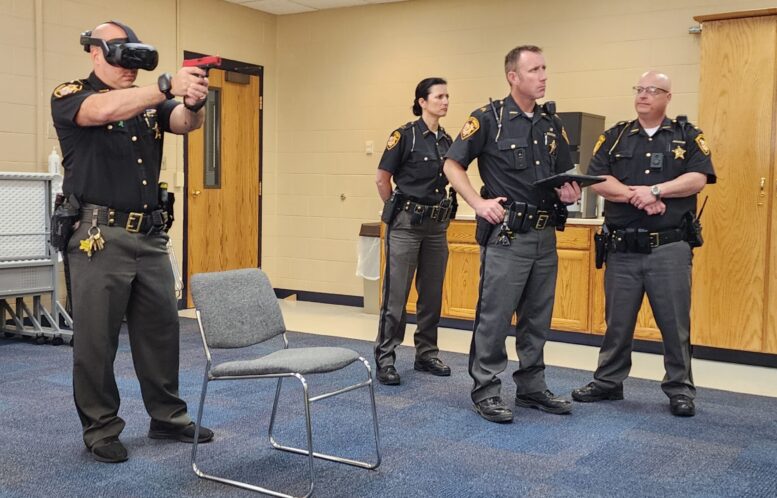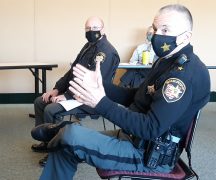By JAN LARSON McLAUGHLIN
BG Independent News
With virtual reality goggles on, Lt. Jamison Martinez saw a distressed man in crisis. The man was hearing voices and yelling at people to stop watching him.
“I just want to go home,” the man kept repeating.
Martinez was faced with the dilemma of how to best handle the situation, eventually de-escalating the setting and helping the man get home.
“It puts you in a live situation – to make a decision on what you would actually do in that situation,” said Martinez, with the Wood County Sheriff’s Office.
That particular scenario was part of the “empathy based training” offered through Axon Virtual Reality Simulator Training, designed to help officers develop critical thinking and de-escalation skills. It can put the goggle wearer in the role of the law enforcement officer, a bystander, a victim, or a person in a mental health crisis.
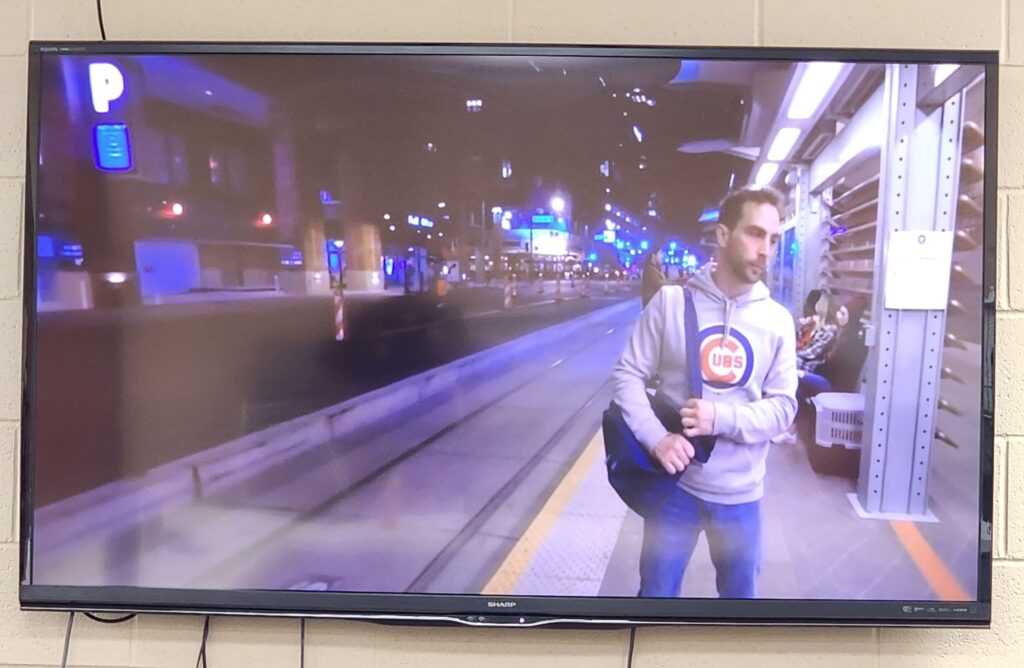
Personnel at the Wood County Sheriff’s Office learned the simulator system last week so they can teach others in the department to train using the virtual reality goggles. The Axon VR Training Platform was purchased recently using $151,000 in American Rescue Plan Act funding.
The interactive goggles put deputies in certain situations, then adjust the outcome based on the steps taken by the officer.
“I’ve always been a big believer in training – and the more realistic, the better,” Wood County Sheriff Mark Wasylyshyn said. “It can be used for any type of calls we may go on. They try to make it as real as possible.”
The virtual reality training is also designed for jail situations, and stresses the use of de-escalation techniques.
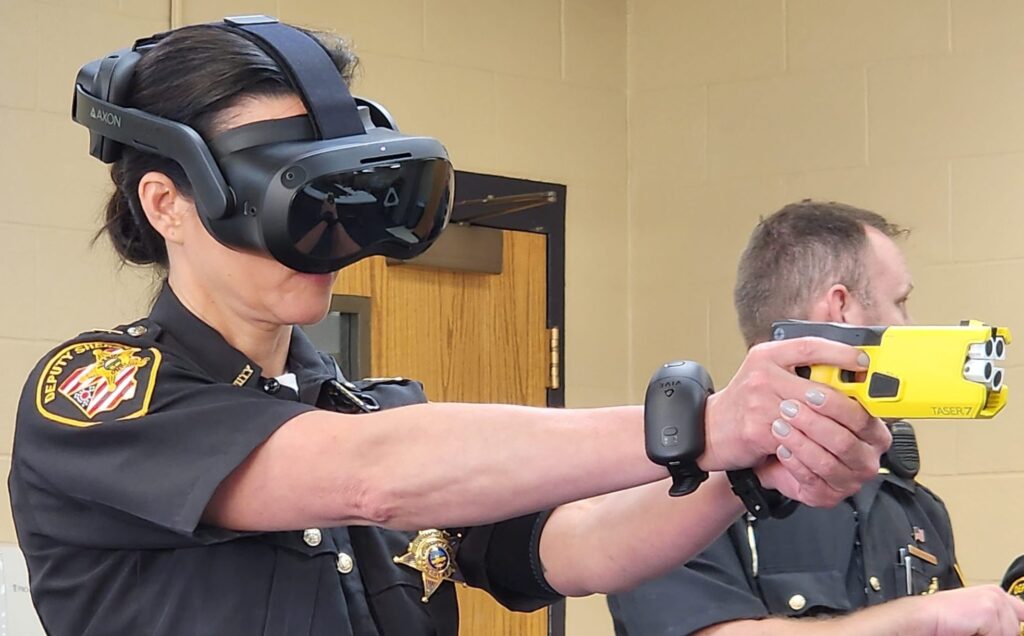
While the training may be tricky at first, the younger generation of law enforcement officers is accustomed to working with virtual reality simulations, said Capt. Greg Panning with the sheriff’s office.
“This is how the younger generation learns. This is a new era. This is how training has evolved,” Panning said.
Seth Luedtke, an Axon trainer assisting last week, said this type of training teaches officers to use the least force necessary.
“This is the new reality in law enforcement,” said Luedtke, who was a police officer for 15 years in Colorado before becoming a trainer with Axon.
“The ultimate goal is that we’re putting our officers in training situations they might encounter,” Panning said.
Some of the scenarios are volatile, and include active shooter situations.
“How you train is how you’re going to perform,” Panning said. “It makes them better deputies.”
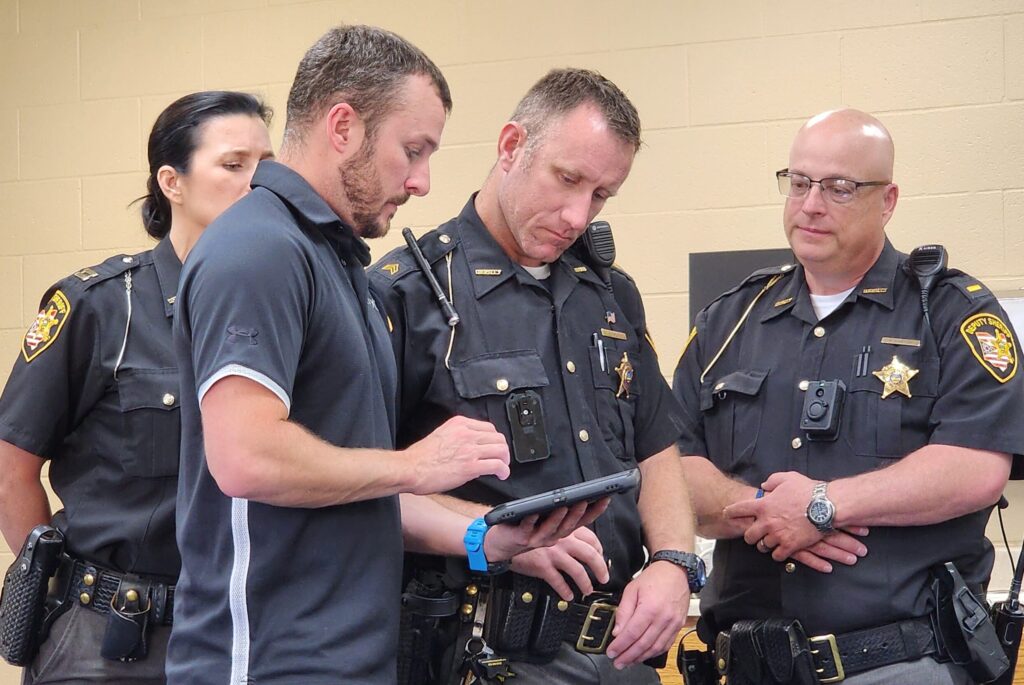
All the sheriff’s road patrol deputies and corrections officers will be trained using the virtual reality system, which has more than 20 scenarios.
One scenario focuses on Taser skills, putting the deputies in situations where they decide if they should deploy a Taser. If the decision is yes, then they practice aiming the Taser for most effectiveness, avoiding thick clothing that won’t allow the prongs to penetrate.
According to Axon, law enforcement training can be costly, time consuming and require dedicated training centers, props, and paid roleplay instructors. As a result, officers may not have as much access to training as they would like, and oftentimes the training they do get is focused on use-of-force rather than de-escalation skills, according to Axon.
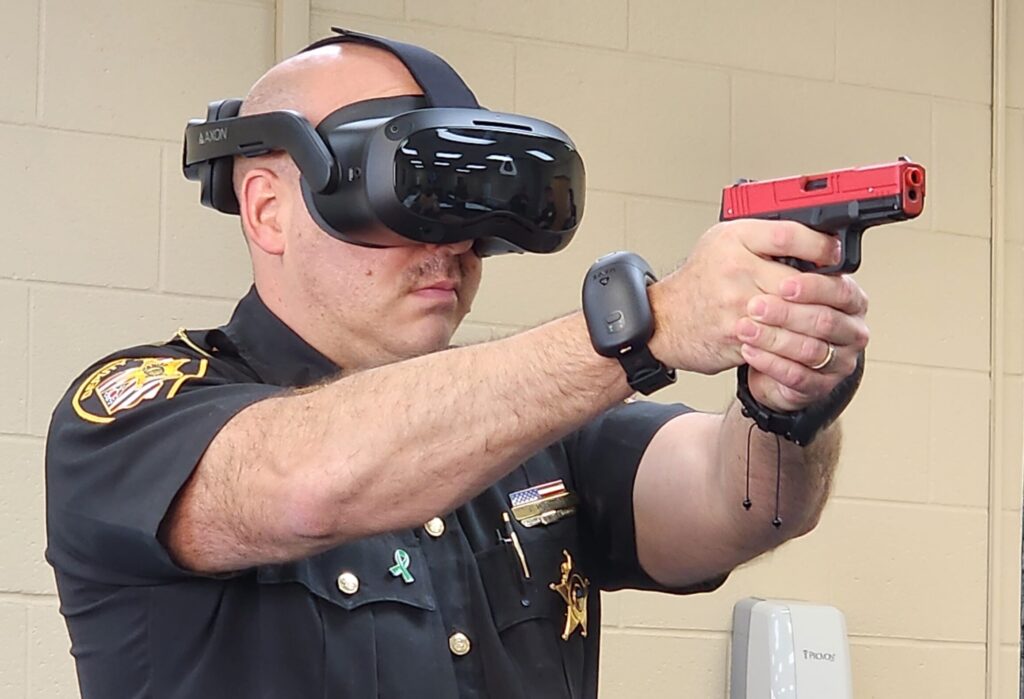
The Axon VR Training platform is made up of three core components including:
- Axon Academy houses a library of supplemental e-learning content and training materials designed to strengthen the skills learned in the Community Engagement and Simulator Training scenarios. For trainers, after-action reports stored on Academy provide performance and progress metrics, insight into an officer’s decisions, and new opportunities for coaching and program development.
- Community Engagement Training focuses on developing skills, empathy and communication for engaging with individuals in scenarios involving mental health, trauma, peer intervention and more. Through these experiences, trainees get to understand the perspectives of both the officer and the civilian, and see how different modes of communication can result in de-escalation.
- Simulator Training
- Firing Range – Basic: In this scenario, trainees learn safe and effective deployment of weapons. Trainees learn to operate TASER 7 energy weapons and replica training firearms in VR within an indoor range environment, then practice their skills on stationary targets from varying distances to improve accuracy, speed, tactical knowledge and critical thinking skills.
- Firing Range – Intermediate: In this scenario, trainees deploy the TASER 7 energy weapon from various distances on moving subjects in an outdoor, nighttime setting. This fast-paced exercise helps trainees use safety features, recognize proper spread and probe placement on moving subjects, manage clothing disconnects, and achieve higher effectiveness when deploying TASER cartridges.
To learn more about simulator training visit https://www.axon.com/training/vr.

